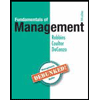Case study: International strategies Read the text below, then answer the questions which follow. In the 1990s the share prices of global brand-owners such as Coca-Cola, McDonald’s and Walt Disney soared as investors savored the companies’ growth prospects. Another sign of the times was the trend for companies to brand or rebrand themselves with global-sounding names seemingly plucked from Esperanto, such as Diageo, Novartis and Invensys. Then, something unexpected happened: a reaction set in. People around the world started demanding more local sovereignty and more protection for their cultural identities. Most worryingly for global brand-owners, consumers in newly opened markets started expressing a desire for local products – which, as local manufacturers adopted Western business methods, were simultaneously showing a big improvement in quality. By the end of the 1990s, most global brand-owners were switching chief executives as their share prices plummeted in response to slowing growth rates. In March 2000 in a signed article in the Financial Times, Douglas Daft, Coca-Cola’s new chief executive, offered a startling analysis of what had gone wrong. Coca-Cola, Mr Daft wrote, had traditionally been a ‘multi-local’ company but as globalization had gathered pace, it had centralized its decision making and standardised its practices. ‘We were operating as a big, slow, insulated, sometimes even insensitive “global” company and we were doing it in a new era when nimbleness, speed, transparency and local sensitivity had become absolutely essential to success,’ he wrote. But Coca-Cola had learnt its lesson, Mr Daft said. It was that ‘the next big evolutionary step of “going global” now has to be “going local”. In other words, we have to rediscover our own multi-local heritage.’ Astonishingly, it was almost the opposite of what Prof. Levitt had advocated. Yet now it is the almost universally accepted wisdom. The one size-fits-all approach is out; ‘think local, act local’ is in. Coca-Cola owns not one brand but more than 200, mostly local; McDonald’s varies its menu to suit local tastes; MTV has different programming to suit different countries and regions. Whilst homogenization has affected some product categories – mainly in the technology sector, where there are no cultural barriers to overcome – the paradox of globalization is that it has led not to a convergence of tastes but to a vast increase in the number of choices available to consumers. People can now buy products from all over the world: global, regional and local. Another paradox is that technology is aiding the fragmentation. ‘Prof. Levitt was assuming that the only way to get scale was through standardisation. It was essentially the Henry Ford argument,’ says Lowell Bryan, a McKinsey director and former student of Prof. Levitt. ‘But technology has changed the economics of production. Now, you can have both economies of scale and also deliver very discrete, specialized products.’ Question (a) How does the case study suggest international business strategies have changed over time? (b) What have been the reasons for such change?
Case study: International strategies Read the text below, then answer the questions which follow. In the 1990s the share prices of global brand-owners such as Coca-Cola, McDonald’s and Walt Disney soared as investors savored the companies’ growth prospects. Another sign of the times was the trend for companies to brand or rebrand themselves with global-sounding names seemingly plucked from Esperanto, such as Diageo, Novartis and Invensys. Then, something unexpected happened: a reaction set in. People around the world started demanding more local sovereignty and more protection for their cultural identities. Most worryingly for global brand-owners, consumers in newly opened markets started expressing a desire for local products – which, as local manufacturers adopted Western business methods, were simultaneously showing a big improvement in quality. By the end of the 1990s, most global brand-owners were switching chief executives as their share prices plummeted in response to slowing growth rates. In March 2000 in a signed article in the Financial Times, Douglas Daft, Coca-Cola’s new chief executive, offered a startling analysis of what had gone wrong. Coca-Cola, Mr Daft wrote, had traditionally been a ‘multi-local’ company but as globalization had gathered pace, it had centralized its decision making and standardised its practices. ‘We were operating as a big, slow, insulated, sometimes even insensitive “global” company and we were doing it in a new era when nimbleness, speed, transparency and local sensitivity had become absolutely essential to success,’ he wrote. But Coca-Cola had learnt its lesson, Mr Daft said. It was that ‘the next big evolutionary step of “going global” now has to be “going local”. In other words, we have to rediscover our own multi-local heritage.’ Astonishingly, it was almost the opposite of what Prof. Levitt had advocated. Yet now it is the almost universally accepted wisdom. The one size-fits-all approach is out; ‘think local, act local’ is in. Coca-Cola owns not one brand but more than 200, mostly local; McDonald’s varies its menu to suit local tastes; MTV has different programming to suit different countries and regions. Whilst homogenization has affected some product categories – mainly in the technology sector, where there are no cultural barriers to overcome – the paradox of globalization is that it has led not to a convergence of tastes but to a vast increase in the number of choices available to consumers. People can now buy products from all over the world: global, regional and local. Another paradox is that technology is aiding the fragmentation. ‘Prof. Levitt was assuming that the only way to get scale was through standardisation. It was essentially the Henry Ford argument,’ says Lowell Bryan, a McKinsey director and former student of Prof. Levitt. ‘But technology has changed the economics of production. Now, you can have both economies of scale and also deliver very discrete, specialized products.’ Question (a) How does the case study suggest international business strategies have changed over time? (b) What have been the reasons for such change?
Chapter1: Taking Risks And Making Profits Within The Dynamic Business Environment
Section: Chapter Questions
Problem 1CE
Related questions
Question
Case study: International strategies Read the text below, then answer the questions which follow. In the 1990s the share prices of global brand-owners such as Coca-Cola, McDonald’s and Walt Disney soared as investors savored the companies’ growth prospects. Another sign of the times was the trend for companies to brand or rebrand themselves with global-sounding names seemingly plucked from Esperanto, such as Diageo, Novartis and Invensys. Then, something unexpected happened: a reaction set in. People around the world started demanding more local sovereignty and more protection for their cultural identities. Most worryingly for global brand-owners, consumers in newly opened markets started expressing a desire for local products – which, as local manufacturers adopted Western business methods, were simultaneously showing a big improvement in quality. By the end of the 1990s, most global brand-owners were switching chief executives as their share prices plummeted in response to slowing growth rates. In March 2000 in a signed article in the Financial Times, Douglas Daft, Coca-Cola’s new chief executive, offered a startling analysis of what had gone wrong. Coca-Cola, Mr Daft wrote, had traditionally been a ‘multi-local’ company but as globalization had gathered pace, it had centralized its decision making and standardised its practices. ‘We were operating as a big, slow, insulated, sometimes even insensitive “global” company and we were doing it in a new era when nimbleness, speed, transparency and local sensitivity had become absolutely essential to success,’ he wrote. But Coca-Cola had learnt its lesson, Mr Daft said. It was that ‘the next big evolutionary step of “going global” now has to be “going local”. In other words, we have to rediscover our own multi-local heritage.’ Astonishingly, it was almost the opposite of what Prof. Levitt had advocated. Yet now it is the almost universally accepted wisdom. The one size-fits-all approach is out; ‘think local, act local’ is in. Coca-Cola owns not one brand but more than 200, mostly local; McDonald’s varies its menu to suit local tastes; MTV has different programming to suit different countries and regions. Whilst homogenization has affected some product categories – mainly in the technology sector, where there are no cultural barriers to overcome – the paradox of globalization is that it has led not to a convergence of tastes but to a vast increase in the number of choices available to consumers. People can now buy products from all over the world: global, regional and local. Another paradox is that technology is aiding the fragmentation. ‘Prof. Levitt was assuming that the only way to get scale was through standardisation. It was essentially the Henry Ford argument,’ says Lowell Bryan, a McKinsey director and former student of Prof. Levitt. ‘But technology has changed the economics of production. Now, you can have both economies of scale and also deliver very discrete, specialized products.’
Question
(a) How does the case study suggest international business strategies have changed over time?
(b) What have been the reasons for such change?
Expert Solution
This question has been solved!
Explore an expertly crafted, step-by-step solution for a thorough understanding of key concepts.
Step by step
Solved in 2 steps

Recommended textbooks for you

Understanding Business
Management
ISBN:
9781259929434
Author:
William Nickels
Publisher:
McGraw-Hill Education

Management (14th Edition)
Management
ISBN:
9780134527604
Author:
Stephen P. Robbins, Mary A. Coulter
Publisher:
PEARSON

Spreadsheet Modeling & Decision Analysis: A Pract…
Management
ISBN:
9781305947412
Author:
Cliff Ragsdale
Publisher:
Cengage Learning

Understanding Business
Management
ISBN:
9781259929434
Author:
William Nickels
Publisher:
McGraw-Hill Education

Management (14th Edition)
Management
ISBN:
9780134527604
Author:
Stephen P. Robbins, Mary A. Coulter
Publisher:
PEARSON

Spreadsheet Modeling & Decision Analysis: A Pract…
Management
ISBN:
9781305947412
Author:
Cliff Ragsdale
Publisher:
Cengage Learning

Management Information Systems: Managing The Digi…
Management
ISBN:
9780135191798
Author:
Kenneth C. Laudon, Jane P. Laudon
Publisher:
PEARSON

Business Essentials (12th Edition) (What's New in…
Management
ISBN:
9780134728391
Author:
Ronald J. Ebert, Ricky W. Griffin
Publisher:
PEARSON

Fundamentals of Management (10th Edition)
Management
ISBN:
9780134237473
Author:
Stephen P. Robbins, Mary A. Coulter, David A. De Cenzo
Publisher:
PEARSON